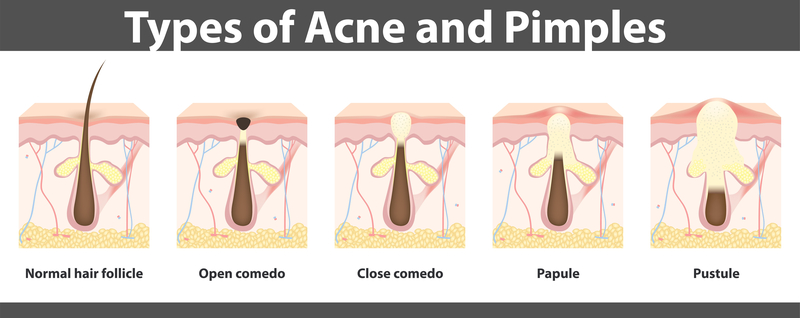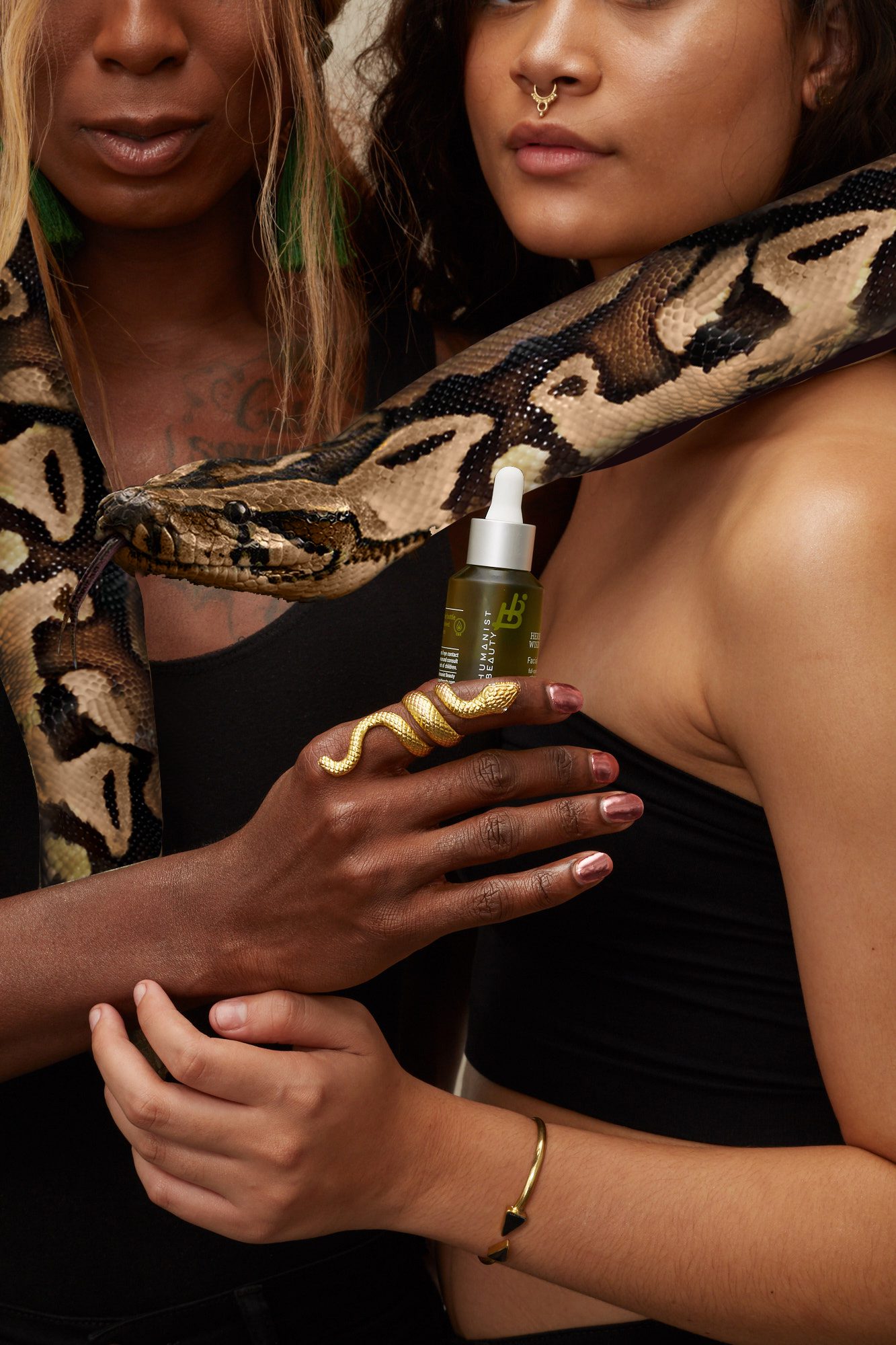A Guide to Antioxidants
You’ve probably heard that antioxidants are good for you, but what exactly are they, and what do they do? The word “antioxidants” is often found on the package labels of salad mixes, kombucha bottles, dietary supplements, and of course, many topical skincare products. They are indeed beneficial for a plethora of reasons, most notably cellular protection. In this article, we’ll cover the basics of antioxidants, how they work, and the best way to get them.
What Are Free Radicals?
To fully understand antioxidants, we’ll first start with free radicals. Free radicals are molecules with unpaired electrons that are unstable and highly reactive. They’re created through normal body processes like metabolism and digestion, but they are also produced through the body’s exposure to excess sun, radiation, pollution, cigarette smoke, and more.
Free radical activity in the body is completely normal, however excessive free radical activity is known as oxidative stress which can compromise one’s health. Too much oxidative stress can trigger chain reactions that attack healthy DNA, proteins, and lipids.1 According to the free radical theory of aging, oxidative stress causes unwanted inflammation that damages cells, destroys collagen, and causes premature aging.
Some conditions caused by oxidative stress include:
- Acceleration of the aging process, leading to fine lines, sagging skin, and wrinkles
- Deterioration of the eye lens, which contributes to vision loss
- Inflammation of the joints (arthritis)
- Damage to nerve cells in the brain, which contributes to conditions such as Parkinson’s or Alzheimer’s disease
- Increased risk of coronary heart disease
- Certain cancers triggered by damaged cell DNA
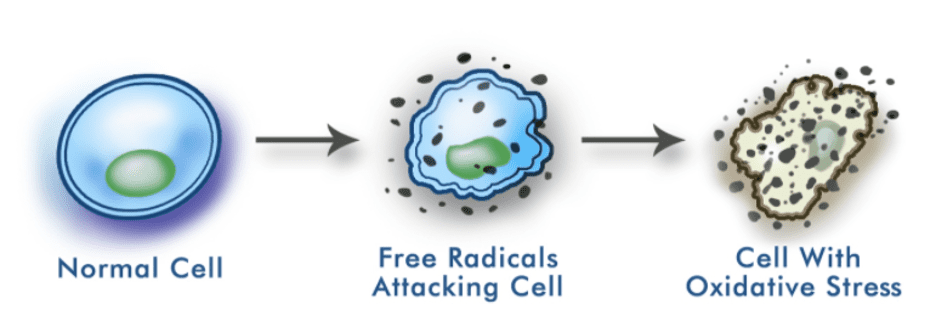
Pictured: Cell under oxidative stress Source: Serving Seniors
What Are Antioxidants?
Antioxidants, sometimes known as “free radical scavengers,” are like peacemakers to free radicals. They neutralize free radicals by donating an electron to each of them. This stabilizes the free radicals from running amok and prevents them from damaging nearby cells.
There are hundreds, perhaps thousands, of different substances that can act as antioxidants. The most familiar ones are vitamin C, vitamin E, beta-carotene, selenium, and manganese. Others include glutathione, coenzyme Q10, lipoic acid, flavonoids, phenols, polyphenols, and many more.
It is important to know that the term “antioxidant” refers to a chemical property, namely, the ability to act as an electron donor in a given situation. It does not refer to the substance itself. Why? Some substances can act as an antioxidant in one situation and as a pro-oxidant (electron grabber) in a different situation. Another important note is that antioxidants are not interchangeable. Each one has a unique chemical behavior and biological property. They almost certainly evolved as parts of elaborate biochemical systems with each different substance (or family of substances) playing slightly different roles.
Antioxidants came to public attention in the 1990s when scientists began to understand that free radical damage was involved in the early stages of artery-clogging atherosclerosis.2 Since then, a multitude of clinical studies have been administered to test the impact of antioxidants as weapons against chronic diseases, along with the benefits of an antioxidant-rich diet and skincare routine.
Some nutrients with high antioxidant potency include:
- Vitamin C, also known as ascorbic acid, is an extremely powerful antioxidant that your body can’t manufacture, yet is necessary for the growth, development, and repair of all body tissues. It’s involved in many bodily functions, including the formation of collagen, absorption of iron, the immune system, wound healing, and the maintenance of cartilage, bones, and teeth.3
- Vitamin E, also known as tocopherol, is important to vision, reproduction, and the health of your blood, brain, and skin. Having a vitamin E deficiency can cause nerve pain (neuropathy).4
- Selenium is a trace mineral found in the soil and also appears in certain foods. It’s important for reproduction, thyroid function, DNA production, and protecting the body from infection.5
- Quercetinis another antioxidant found in certain plant foods that has many well-researched health benefits. It doubles as a plant pigment, which means only plants manufacture it.

Pictured: Antioxidants donate an unpaired electron to free radicals Source: Greatest
How Antioxidant Content is Measured – The ORAC System
There are several ways the antioxidant potency of food can be measured, but the ORAC value system is the most widely used. ORAC, or Oxygen Radical Absorbance Capacity, is determined by placing a specific amount of food sample in a test tube with (1) molecules that generate free radical activity and (2) molecules that are vulnerable to free radical activity. The food sample is scored by how well it protects the vulnerable molecules from oxidative damage. The higher the score a food has, the higher its protective properties and total antioxidant capacity are. Hence, a food that has an ORAC value of 1000 will have 5 times more antioxidant capacity than a food that has an ORAC value of 200.
Antioxidants in Your Diet
Antioxidants are essential for the survival of all living things. Our bodies generate their own antioxidants, such as the cellular antioxidant glutathione. Plants, animals, and all other forms of life also have their own defenses against free radicals and oxidative damage. Therefore, antioxidants are found in all whole foods of plant and animal origin.
Adequate antioxidant intake is vital for proper biological functioning. In fact, our bodies require the consumption of certain antioxidants, such as vitamin C and E, for optimal health. For example, men who eat plenty of lycopene (found in tomatoes) may be less likely than other men to develop prostate cancer.6 Additionally, flavonoids, such as the tea catechins found in green tea, are believed to contribute to the low rates of heart disease in Japan.7
Antioxidant-Rich Foods
Many of the phytochemicals (plant chemicals) found in the foods we eat function as antioxidants. These nutrients work by inhibiting the formation of free radicals and reducing the damage they would otherwise cause in the body. This is thought to be at least part of the reason why a diet rich in vegetables and fruit has been linked to a lower risk of many diseases.8 However, meat, dairy, and eggs also contain antioxidants, which mainly come from the nutrient-rich plants the animals feed on.
Here are some common foods rich in various antioxidant nutrients:
- Milk, butter, salmon, cheese, animal liver, and eggs are great sources of Vitamin A
- Broccoli, cantaloupe, honeydew, leafy greens (turnip, mustard, collards, beet), kiwi, lemons, oranges, and bell peppers are great sources of Vitamin C
- Almonds, leafy greens (turnip, mustard, beet), sunflower seeds, peanuts, and avocados are great sources of Vitamin E
- Carrots, apricots, peaches, and mangoes are great sources of beta-carotene
- Tomatoes, grapefruit, and watermelon are great sources of lycopene
- Blueberries, raspberries, strawberries, acai, pomegranate, and red cabbage are great sources of the flavonoid anthocyanin
- Dark chocolate, red wine, cranberry juice, and red delicious apples are great sources of the flavonoid procyanidin
- Brazil nuts, fish, shellfish, poultry, barley, corn, wheat, and brown rice are great sources of Selenium
- Beef, poultry, shrimp, oysters, pumpkin seeds, sesame seeds, chickpeas, cashews, and lentils are great sources of Zinc
Eating antioxidant rich foods is preferred over taking antioxidant supplements because foods are enriched with other nutrients that work biologically with each other. For example, one cup of fresh strawberries contains about 80 mg of vitamin C. But a 500 mg of vitamin C supplement (667% of the RDA) lacks the robust plant chemicals (polyphenols) naturally found in strawberries like proanthocyanins and flavonoids, which also possess antioxidant activity and may assist vitamin C in fighting disease. Polyphenols also have many other benefits besides antioxidant activity.
Curious if your favorite foods have high levels of antioxidants? Check out this antioxidant food chart to find out.
Skincare Benefits of Antioxidants
Many topical skincare products incorporate antioxidants to deliver skin health benefits directly to the skin. Savvy skincare consumers read ingredient lists and look for antioxidant-rich ingredients. They do this despite the fact that the FDA does not allow traditional cosmetic skincare products to make structure-function claims, because doing so would classify these products as drugs.
Prevent Sun Damage
Antioxidants give skin a protective effect against UV damage when used alongside sunscreen by curtailing skin’s inflammatory response to the sun’s harmful rays, preventing sunburn, and providing enhanced protection against damage and photoaging.8 It is important to know, however, that antioxidants are not a replacement for sunscreen ingredients such as titanium dioxide or zinc oxide which have been approved and are regulated to provide UV skin protection.
Help Skin Repair Itself
Inflammation from free radical damage creates an environment of harm, not healing. By working to reduce inflammation, antioxidants help skin cells stay healthier longer. Cells are better able to retain their natural ability for repair to defend against further damage. Additionally, some antioxidants like vitamin C help stimulate collagen production for a firmer appearance.9
Brighten Skin Tone
Frequent sun exposure and free radicals can trigger changes in your skin’s melanin production, which causes dark spots and uneven skin tone. Antioxidants help prevent abnormal skin pigmentation, and some antioxidants, like vitamin C, work to inhibit tyrosinase, which is an enzyme that stimulates melanin production.10
Defend Against Premature Signs of Aging
Oxidative stress can break down skin’s collagen fibers resulting in fine lines, wrinkles, and sagging skin. By scavenging free radicals, antioxidants can help prevent visible signs of premature skin aging for a smoother, more youthful look.11
Antioxidants in the Humanist Beauty Herban Wisdom™ Facial Oil
At Humanist Beauty, we are fully transparent about every ingredient that goes into our products. Our comprehensive ingredient glossary gives assurance of our formula quality.
The Herban Wisdom™ Facial Oil is teeming with antioxidant-rich ingredients that were carefully selected to provide well-rounded skin benefits. Just a few drops incorporated into your skincare ritual twice daily helps visibly renew your skin so it will appear calm, soothed, and balanced.
Ingredients that have potent antioxidant activity in the Herban Wisdom™ Facial Oil include:
- Tamanu Seed Oil: Shown to have wound-healing and skin rejuvenation properties. Plays a role in anti-aging and skin regeneration by promoting collagen and GAG production.
- Seabuckthorn Oil: Soothes and replenishes skin. Topically, it addresses anti-aging, skin rejuvenation, eczema, acne, and rosacea.
- Black Cumin Seed Oil: Helps to nourish, moisturize, protect the skin from oxidative stress, and support overall skin health. Used to address eczema, psoriasis, and acne. Learn more about Black Cumin Seed Oil on our blog.
- Fermentoil Glycyrrhiza: Addresses anti-aging, improves skin tone, brightens the skin, and provides UVB protection. Leaves skin feeling non-greasy due to its improved emulsifying capacity. Learn more about Fermentoil Glycyrrhiza on our blog.
- Fermentoil Complex: Known to moisturize the skin, address anti-aging, fight acne, and increase collagen production. Learn more about Fermentoil Complex on our blog.
- Pomegranate Seed Oil: Promotes the regeneration of the epidermis and inhibits the growth of acne-causing bacteria. Commonly used to address eczema and psoriasis.
- Red Raspberry: Inhibits enzymes that lead to visible discoloration and loss of skin firmness, helps skin defend itself against UVB light, and addresses inflammatory conditions (such as eczema).
- Blue Tansy Oil: Helps to calm, soothe, and cool the skin. Commonly used to address sensitive or problem skin.
- Kakadu Plum: Supports healthy collagen, helps to reduce the appearance of dark spots and dullness, boosts radiance, and promotes overall skin health.
- Tocopherol (Vitamin E): Protects skin from UVB damage, brings moisture to the skin, supports anti-aging, assists with wound healing, and promotes overall skin health.
- Cranberry Oil: Provides a youthful glow to the skin.
Want all these antioxidant benefits for yourself? Shop the Herban Wisdom™ Facial Oil here.
—
References:
https://www.frontiersin.org/articles/10.3389/fcell.2020.575645/full [1]
https://ods.od.nih.gov/factsheets/VitaminE-HealthProfessional/ [4]
https://ods.od.nih.gov/factsheets/selenium-consumer/ [5]
https://www.ncbi.nlm.nih.gov/pmc/articles/PMC3850026/ [6]
https://www.ncbi.nlm.nih.gov/pmc/articles/PMC6076941/ [7]
https://www.ncbi.nlm.nih.gov/pmc/articles/PMC5514576/ [9]
https://onlinelibrary.wiley.com/doi/full/10.1111/phpp.12423 [10]
https://www.peertechzpublications.com/articles/OJEB-2-104.php [11]

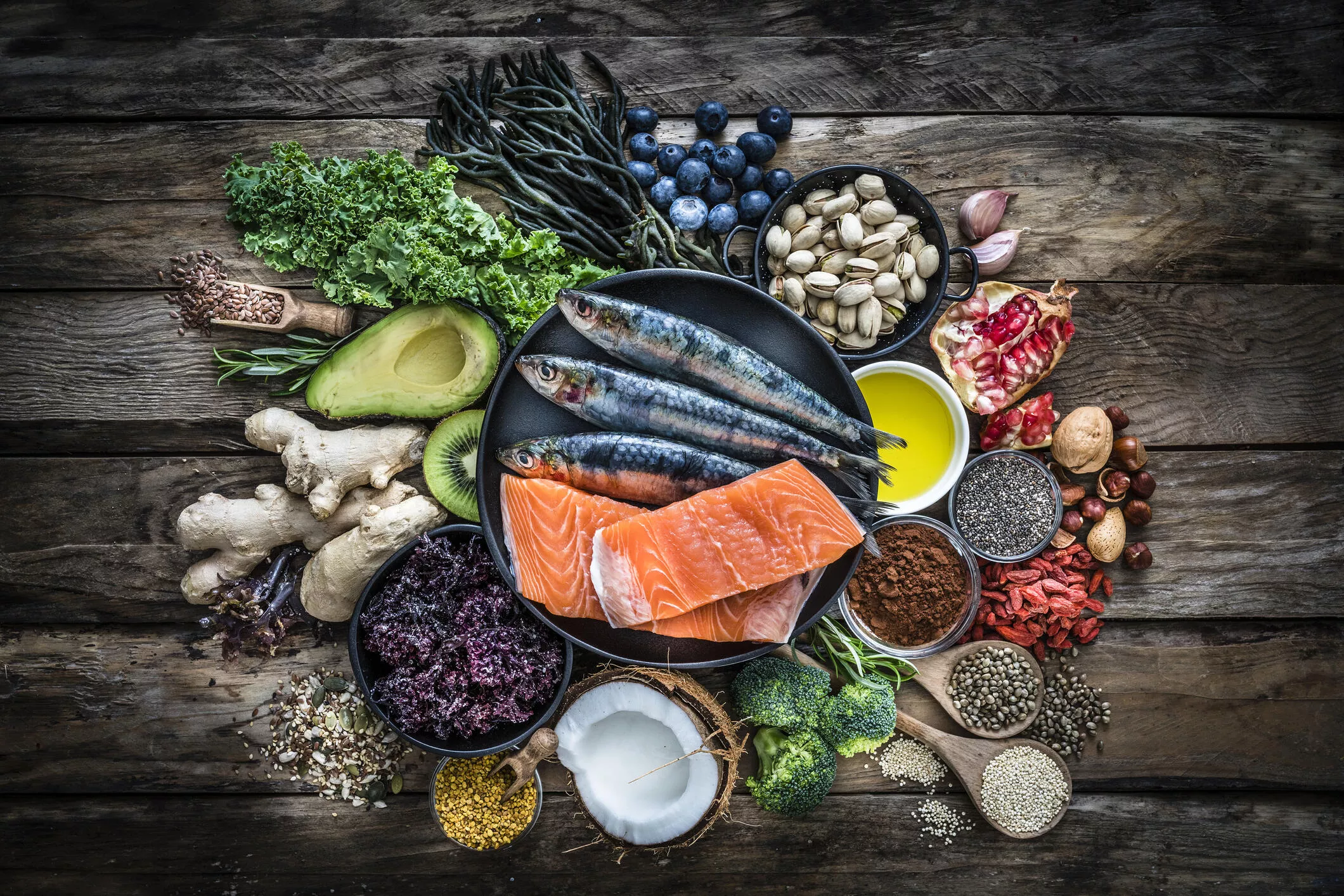
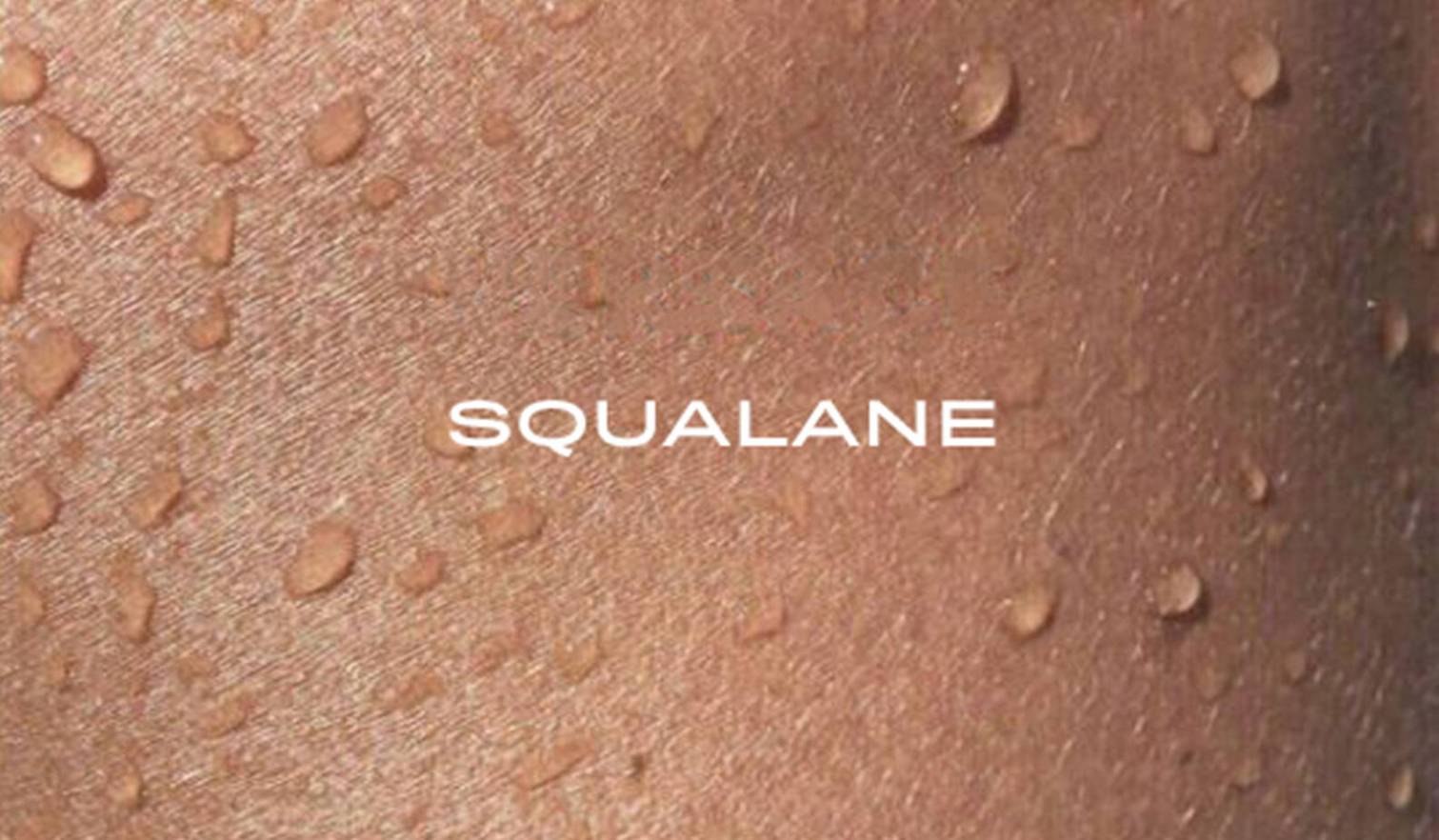
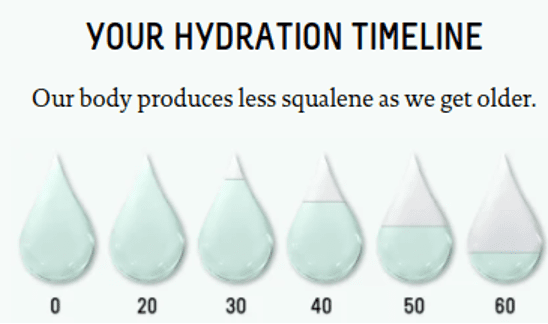
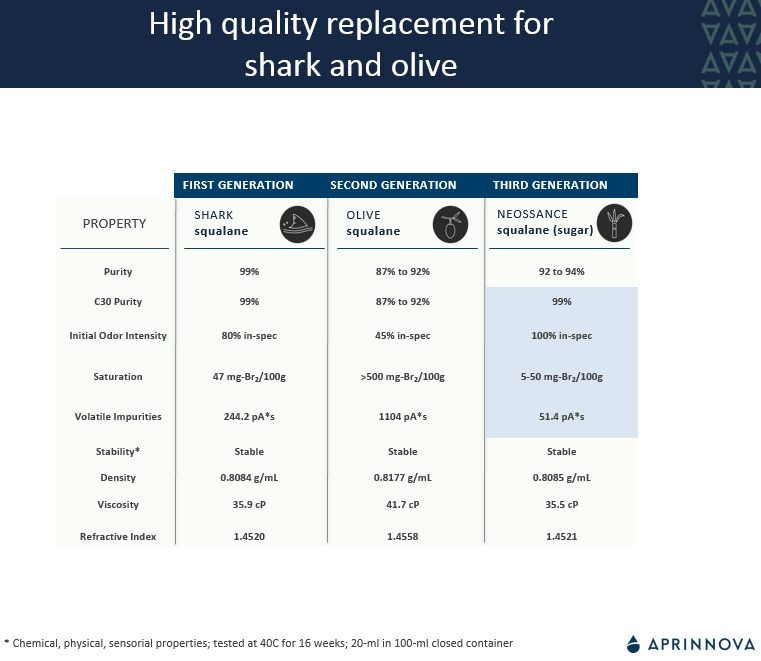 Aprinnova and Neossance Squalane Clinical Studies
Aprinnova and Neossance Squalane Clinical Studies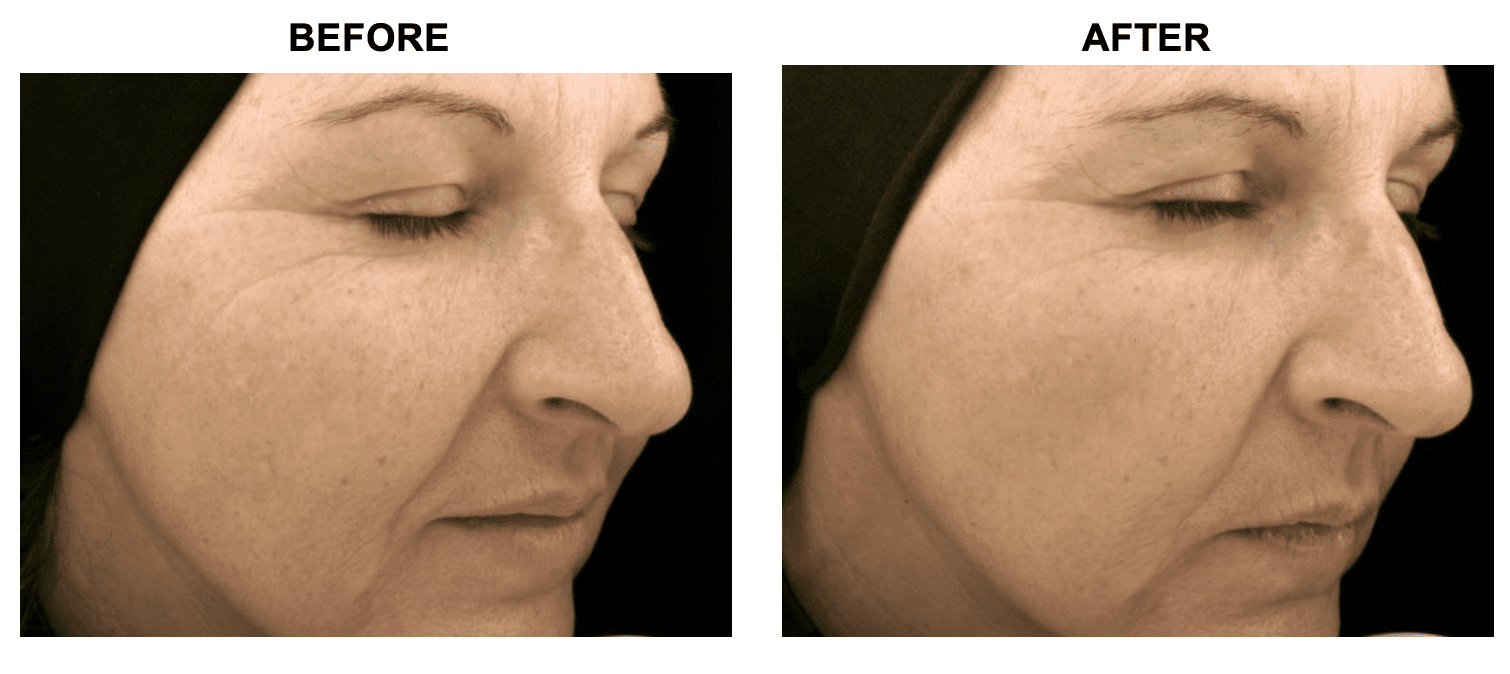

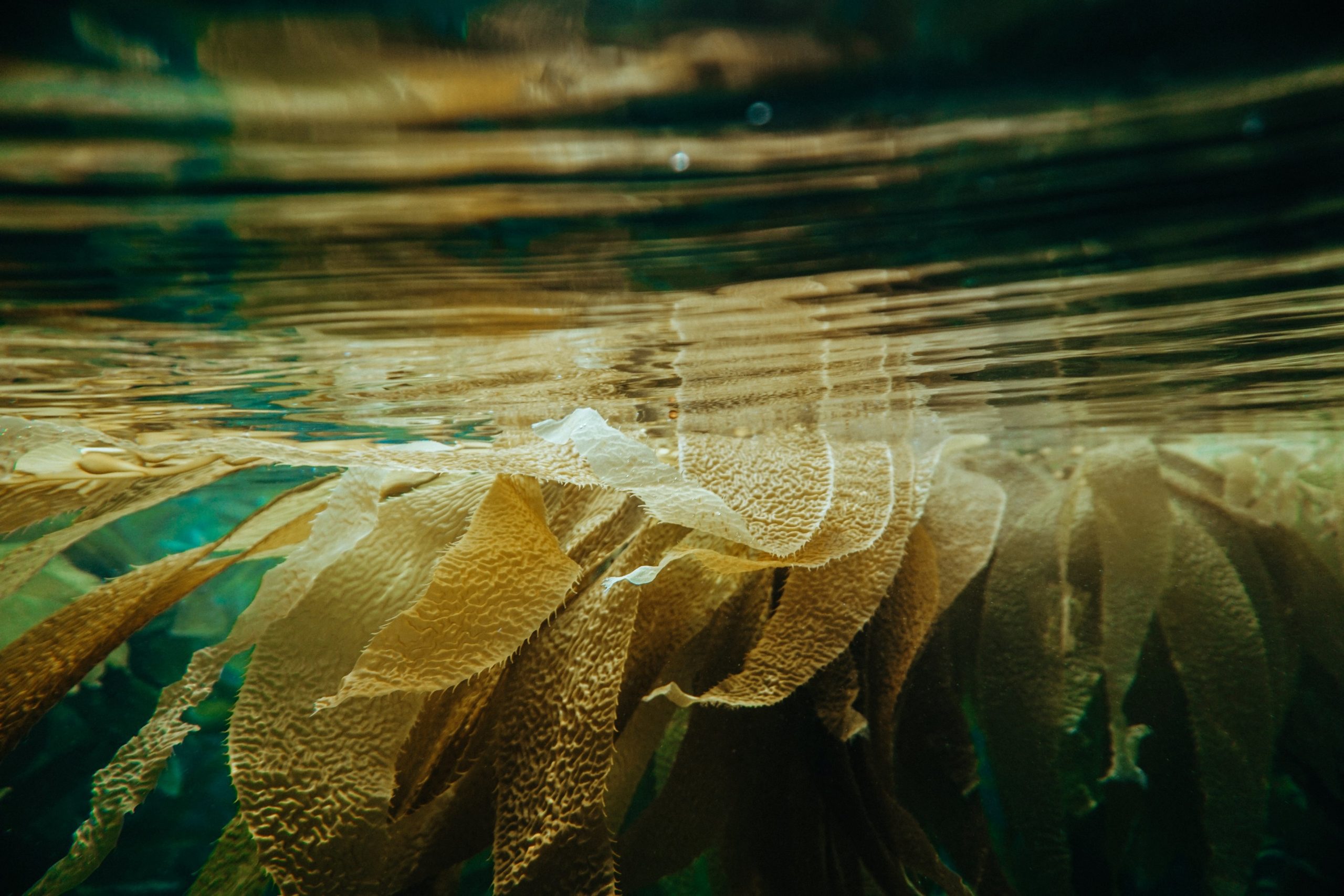
 The Science of Cells
The Science of Cells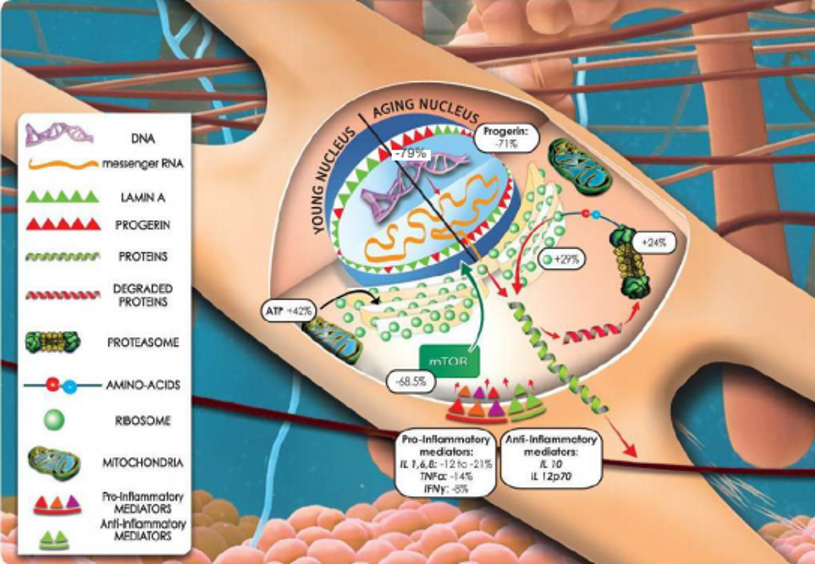 Juvenessence Clinical Studies
Juvenessence Clinical Studies BiotechMarine found that using the Juvenessence 1% cream on the cheeks of the subjects that lack skin firmness had amazing benefits in contrast to partakers not using the cream, such as:
BiotechMarine found that using the Juvenessence 1% cream on the cheeks of the subjects that lack skin firmness had amazing benefits in contrast to partakers not using the cream, such as:
